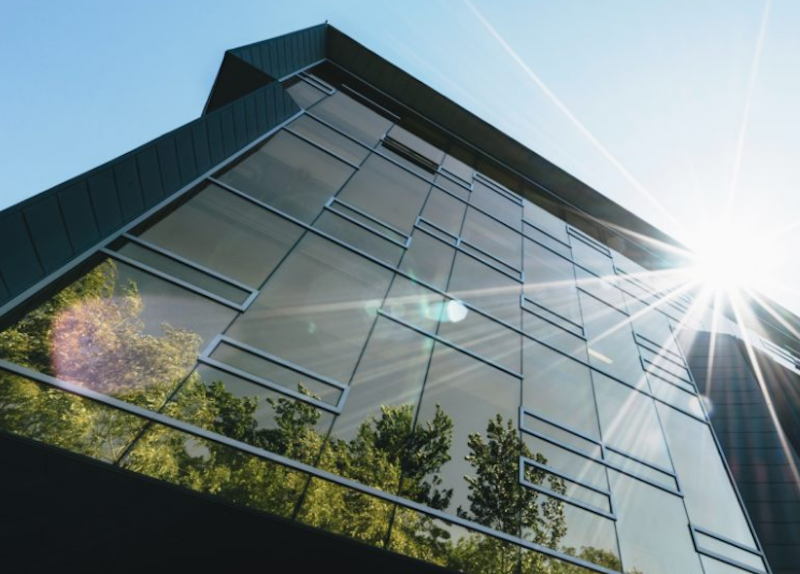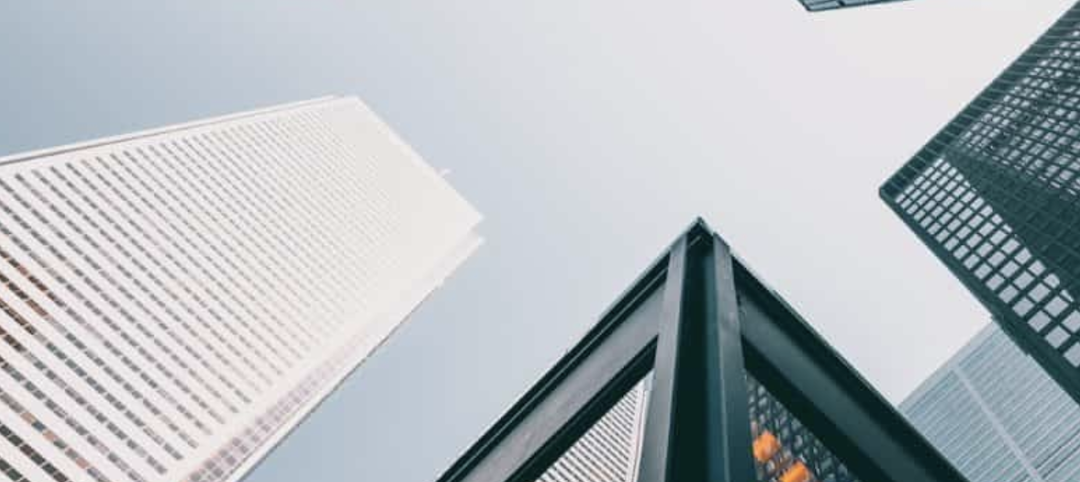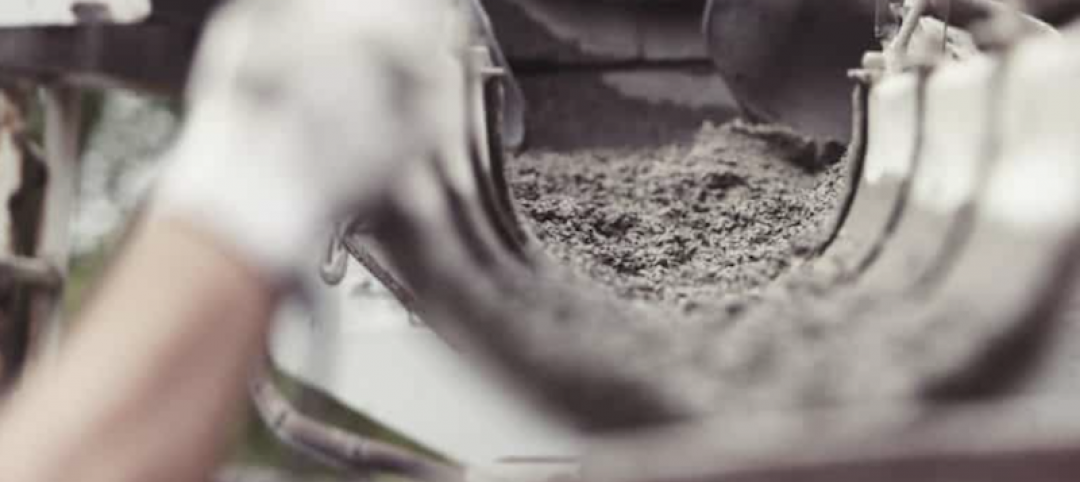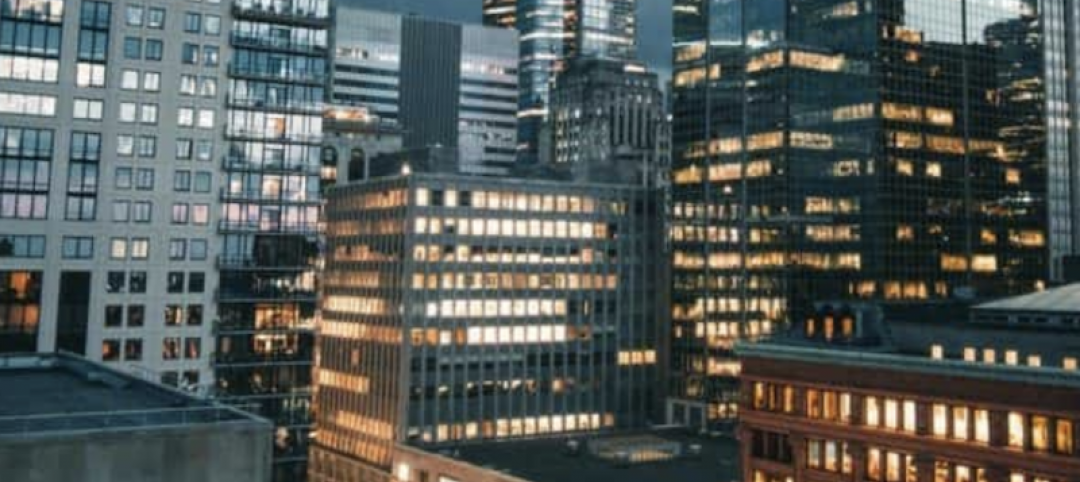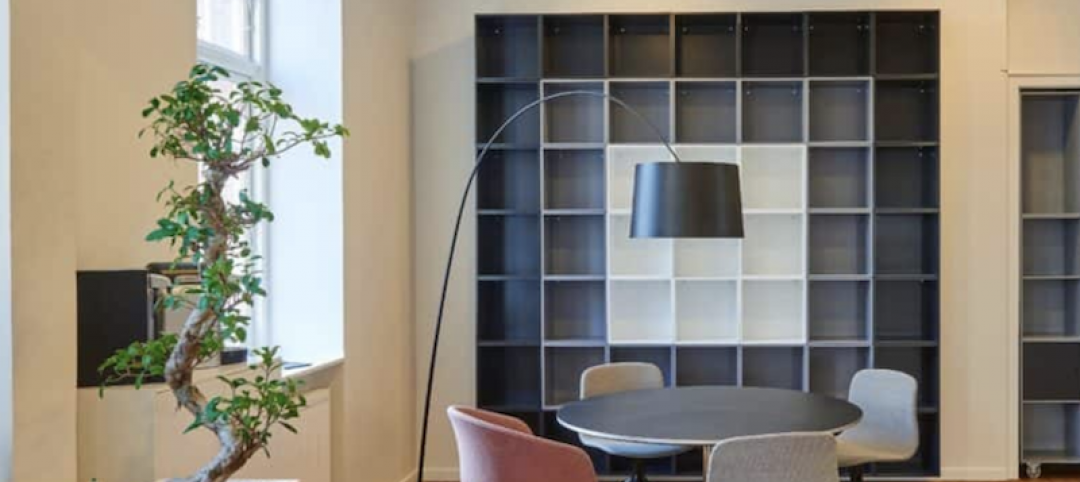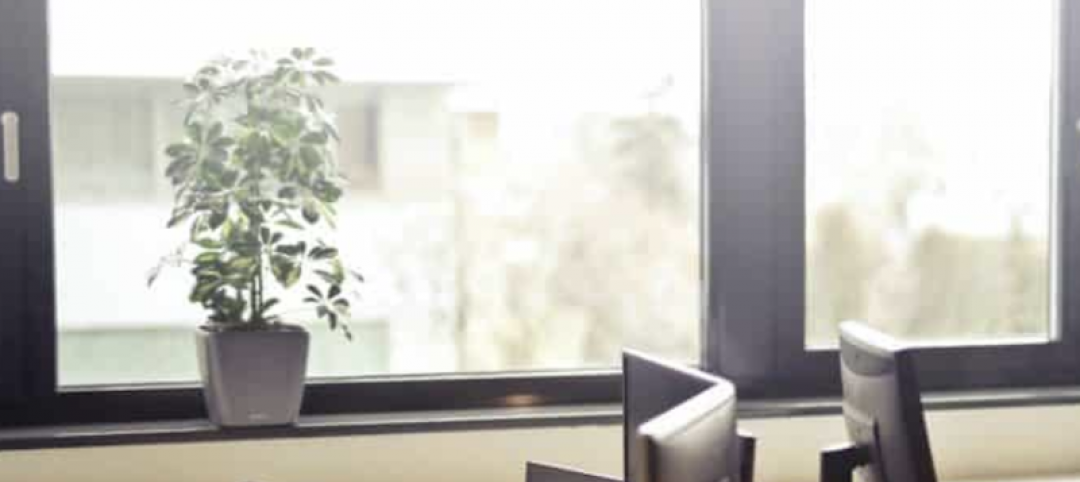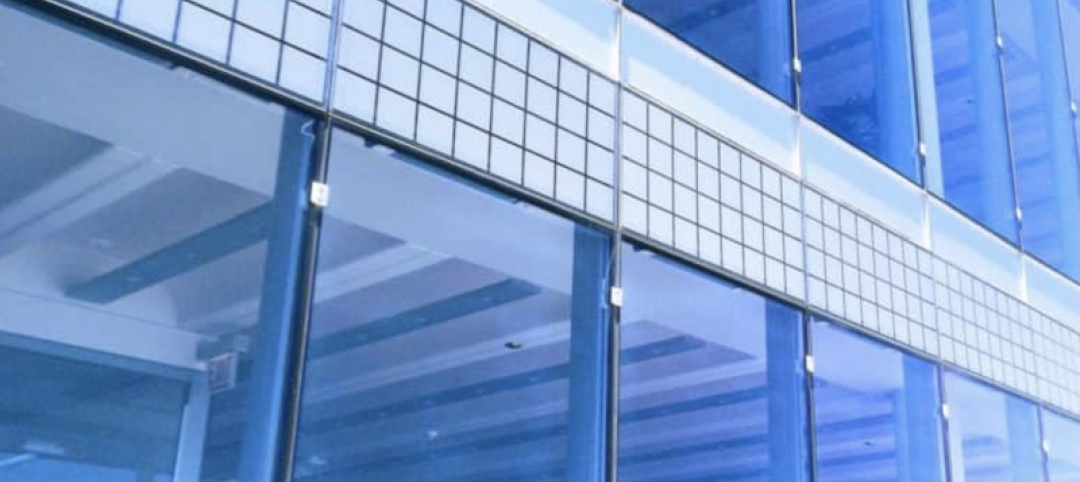Happy New Year and Hello 2018! There was a flurry of new development activity at the end of 2017, and the pace is holding steady as this year begins. We’ve observed several driving trends in the incoming projects and client requests – and those trends indicate that 2018 will be a different sort of year for green buildings. We surveyed our team of architects, engineers, and building scientists, and here are a few of the big shifts that we expect in 2018:
 Image source: Meyer Wells.
Image source: Meyer Wells.
Space design and planning
The workforce of today is more dynamic than ever. Organizations are trying to figure out how to use work spaces that serve their mission and their bottom line. This means that there’s going to be an even greater demand for flexible spaces. Renovating the lobby to make it more like a lounge is just the beginning of the workplace evolution. Flexibility is stretching into many program spaces that were once thought of as static and standard. Flexible hallways, classrooms, stairways, meeting spaces, and more must be on the menu for design teams, property managers and tenants. Ceiling height, hall width, door configurations, and AV options need to be highly adaptable. Furniture will also need to be light weight, mobile, and multi-purpose.
And building function is getting more flexible: apartments can be work spaces; offices can be event spaces; retail spaces can become community centers or simply pop up and pop down based on demand. This design approach means that these flexible spaces become more valuable and sustainable – same resources, different uses!
Adding to that flexibility, we’ll see more true-mixed-use development. Beyond first-floor retail with an apartment building rising above being “mixed-use” we are seeing an increase in full vertical integration that services a variety of programs and users. The condo/hotel, the office/apartment, and public/private open spaces and so on. Amazon is including social services within their buildings to address local homeless populations; hotels are investing in work spaces for long-term corporate travelers that they want to use; Microsoft is creating cities within a building to serve their tech workers. This true mix of uses means that building systems must play well together. Designers need to plan for load sharing opportunities and understand the new way that people are living and working to fully leverage the power of mixed-use development.
More density: As more companies like Expedia, GE, and Weyerhaeuser move from rolling green campuses to urban environments, the demand for space will continue to rise. Expect smaller floor plans, hotel rooms, and apartment footprints. We’ll also see more skinny high rises, making use of a small footprint. Be ready for density.
Wellness
While adoption of the WELL standard is relatively new, the interest in wellness is high. We will see an improved analysis of wellness-feature-impact on the pro forma, increased demand for wellness from corporate brands and employers – along with a scramble on the part of third-party certifiers like IWBI and Fitwel to right-sized their certification solutions. Despite the broad consensus that wellness is good for business, fees are most often mentioned as the impediment to certification, and if wellness certification is going to take off, this is the year to settle the business case.
Along with the interest in the impact of design on human performance, there will be a spike in credible studies underlining the value of wellness. We will learn more this year about how people’s experience of the physical work environment can influence stress in and out of work, as well as sleep quality at night. The combination of improved studies, better data, and higher adoption will result in more market clarity about the wellness features that work best.
Further, wellness is a new discipline for the industry, and leaders are just now starting to emerge. Paladino is joined by companies such as CBRE and Mithun at the front of the wellness curve. Perhaps surprisingly, the sustainability and wellness experts are finding themselves at odds when it comes to priorities (how much energy should we use to achieve greater health?) – but leading organizations know that it’s not either-or. Abundance has taught us that more good options deliver better results. These conflicts should be laid to rest by 2019.
Resiliency
On the heels of one of the most expensive years on record in terms of costs from climate events, resilience is a critical topic.
Developers will continue to frame resilience in terms of risk mitigation and insurance costs, while architects and real estate owners carefully consider the in-place realities of more extreme climate patterns.
Cities will turn up the volume on their resilience requirements, adding to local code and requirements. The DC Reli Plan, while expensive and complex, will be an important resource for real estate developers, architects, and operators in locations with limited infrastructure, climate instability, and security issues. They can learn from it and adapt the winning elements to their local situation.
Coastal and island governments will take Puerto Rico as a worst-case-scenario, and start playing fast catch up on climate resilient building requirements.
Sustainability and resilience are connected concepts within our industry, but the role that sustainability has in reducing climate change – thereby reducing the severity of climate events – should not be taken for granted.
 Image source: Gensler.
Image source: Gensler.
Innovation
Necessity is the mother of invention! And this will be a period of great innovation. This year will bring everything from modular and highly adaptable building designs to technological advancements that unlock projects and create new solutions. We are looking at companies like ORI Systems and the Laurentian Project for inspiration!
2017 brought a flood of smart devices to the market, and we’ll see increased adoption and use of “smart everything” this year. This might also be the year that we realize that smart is best when it’s wise. We’ll see intelligent combinations of passive strategies and smart technologies rise to the top.
We have everything we need to achieve everything we want – partnerships, inventions, and broken rules will drive leadership in 2018.
Certifications
There are more options for certifying the sustainability, wellness, and resilience of a building than ever. The 2017 Greenbuild conference in Boston included presentations and demonstrations from several certifying organizations including Fitwel, ILFI, GRI, JUST, ISSP, IWBI, BREAAM US, and of course GBCI. This highlights the choices that are available to developers and owners – as well as the increasing confusion about best standards to aspire to.
We expect to see more variety in the certifications, more combinations of certifications, and more confusion about the value of certifications. Certifications must function as a back-check on the sustainability goals rather than a driver – so the onus is on our industry to guide clients through their options and to stay abreast of each organization’s strength’s and weakness across multiple dimensions.
LEED is the most mature and most adopted third-party certification in the world, so let’s take a closer look at the changes coming from GBCI.
There is a lot of energy around making. Emory Lovins said it best, “If things are not designed to work together, they tend to work against one another.” The changes in LEED are intended to improve overall alignment between all GBCI products.
Approximately 2000 projects globally are certified to LEED V4, and LEED V4.1 coming. The industry will first notice administrative changes. Under the leadership of Core Enck, LEED V4.1 will focus on right-sizing the materials credits to increase adoption. Regionality/Global applicability is being address through a steering committee.
LEED EB: O&M will demonstrate the largest overhaul in attempt to reduce the barriers to entry. Existing buildings present the greatest opportunity to improve sustainability of the building stock, so we are optimistic about the updates coming to LEED EB: O&M.
Speaking of existing buildings, GBCI is moving to have all buildings in the Arc platform, which is designed to measure outcomes of sustainability efforts. Vornado, Boston Properties, Kilroy and others have made commitments to add all their properties to the Arc platform, which is a strong start. Arc is the key to capturing the existing building stock, which we must do if we are going to stop global warming.
Human factors
Consumers and investors are getting smarter about their expectations around social responsibility, and brands can expect more direct and specific questions about CSR initiatives. Consumers will vote with their dollars, and employees will vote with their employment-of-choice. Companies and developers will expect architects to produce buildings that represent their brand and offer experiences that have tangible examples of wellness and sustainability.
Talent battles will be more intense in 2018, so the commercial real estate battle won’t be for square footage – it will be for top talent. Corporate offices and campuses will do better when they are near higher ed, and offer collaboration spaces that integrate smart thinkers with industry.
You’re probably already gathering and reporting operational data about your building—utility usage, energy efficiency, and GHG emissions. But what about employee and tenant behavior? Supply chain management, resource advocacy, social justice, and wage disparity data? All these factors are increasingly well understood by the buying public and have a direct impact on the business of your building tenants. Building a CSR reporting interface that can help businesses answer these questions first and best will win the buyer.
In closing – 2018 is the year of the dog. An Earth sign! The news cycle is strange, and watercooler conversation has gotten a little wild. But our mission – our goal to design, own, and operate high-performance buildings persists! We are excited about the innovations, industry commitments, and technical advancements that will shape building design in 2018 and beyond.
Did we miss a trend? What do you think is going to shape 2018?
More from Author
Paladino | Jan 10, 2022
The future of regenerative building is performance-based
Why measuring performance results is so critical, but also easier said than done.
Paladino | May 26, 2021
Injecting embodied carbon capability into the integrated design and construction process
Embodied carbon is defined as the carbon footprint of a material, and is expressed in metric tons of CO2e.
Paladino | May 12, 2021
Climate modeling for a resilient business and future
This post explores changes that developers and their teams need to make to their risk and resilience strategies by climate modeling for climate change.
Paladino | Apr 26, 2021
Building performance requirements are coming: Are you ready?
Building Performance Requirements are trending nationwide and are likely coming to a county near you.
Paladino | Feb 8, 2021
Six lessons learned from our first Fitwel Viral Response Module certification
The Fitwel Viral Response Module is one of several frameworks that real estate owners and operators can use to obtain third-party certification for their efforts ensuring their properties are ready for a safer and healthier return to work.
Paladino | Jan 14, 2021
Shift your energy to carbon
Now is the right and necessary time for the commercial real estate industry to shift its environmental strategy from just energy, a carbon contributor, to carbon itself.
Paladino | Nov 13, 2020
5 tips when designing for daylight
Daylight modeling is a tool to examine how daylight interacts with a building, and how that natural light behaves within interior spaces.
Paladino | Jul 16, 2020
COVID readiness: IWBI and USGBC seek to help businesses quantify risk
In an effort to address the risks of COVID-19 at the building scale, USGBC and IWBI have analyzed existing certification guidelines and drafted new, relevant content.
Paladino | Jun 5, 2020
3 strategies to improve the wellness of building systems and gain tenant trust
Three operational issues that must be prioritized for every building in order to achieve tenant trust are air quality/ventilation, relative humidity, and building commissioning.

